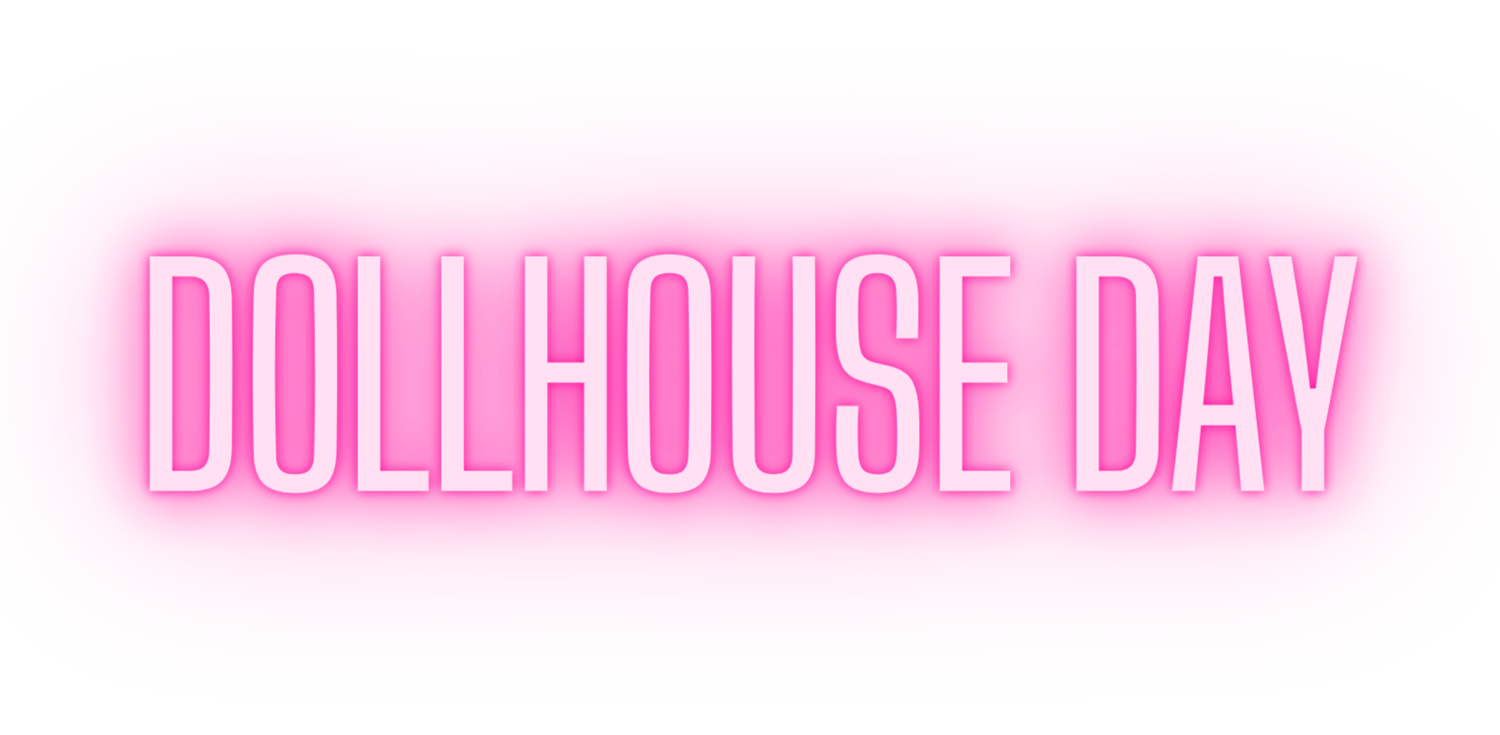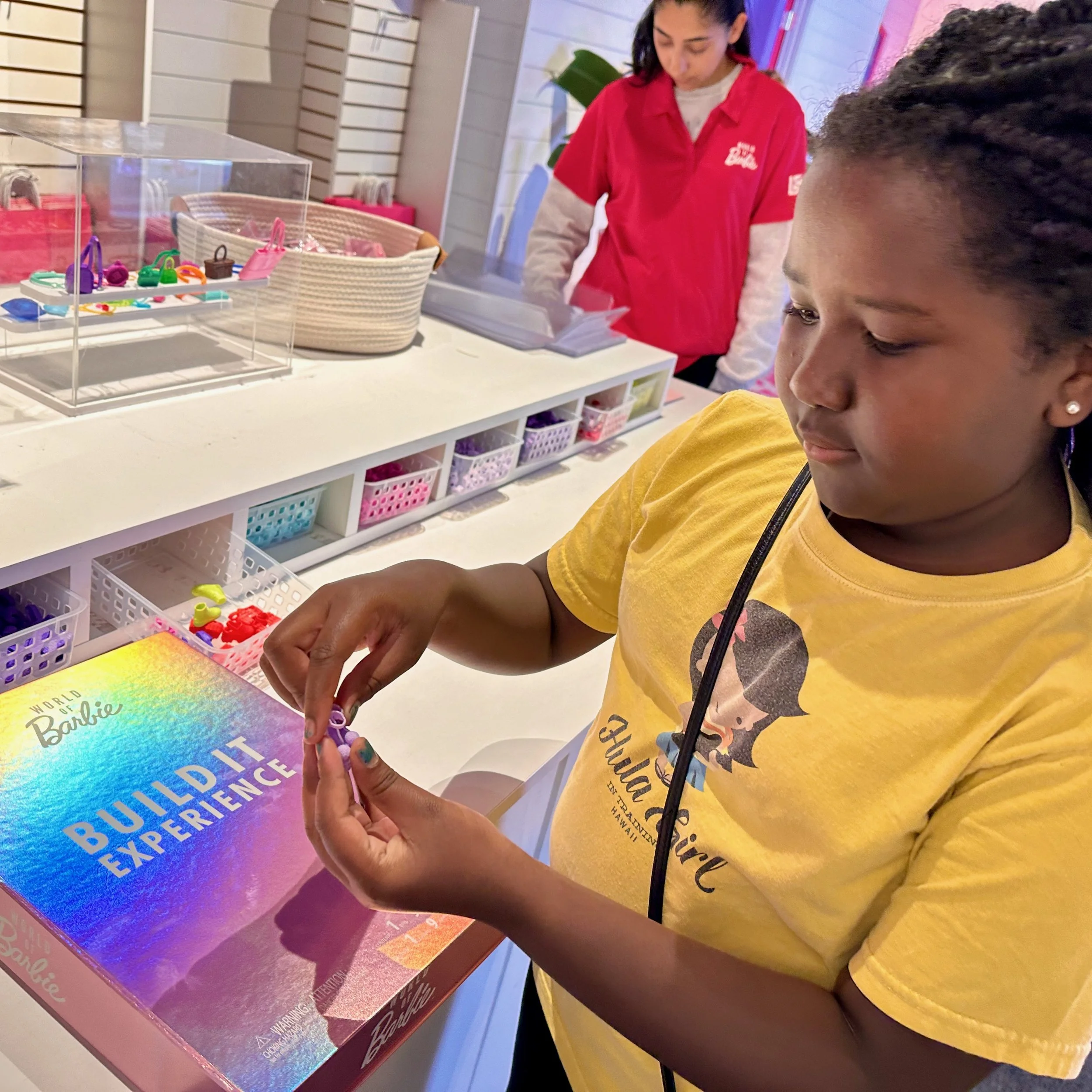Barbie, Bias and The Verdict on playtime
Hosting our own talk show at World of Barbie, Santa Monica 2024.
Two years ago World of Barbie came to California, and I surprised my daughter with VIP tickets because why not? The package included “The Barbie Experience,” a chance at the end of the tour to pick a doll to customize and accessorize. After spending more than an hour walking through the exhibits and learning more about Barbie than I ever thought I could, we arrived at the so-called “experience.”
The “Build It Experience” included a Barbie and up to four accessories. She went for the lavender sandals :)
That overstates what it really was, more of a table piled with tons of Barbies (and Kens) and a few rows of accessories. Each ticket included one doll and four accessories. It was definitely overpriced, but my fashion-loving daughter was in heaven—she immediately picked her doll and went off to explore the accessories. I kept checking out the dolls when another mother and daughter entered the area. They did the opposite: her daughter went to get accessories first and planned to choose a doll afterward. Her mom and I chatted a bit, both agreeing the setup was underwhelming, to say the least.
Then something happened.
She found a doll she thought was perfect for her daughter—big smile, proud moment, holding the box up like treasure. But then she kept reading, and her expression shifted from joy to disgust. The doll she’d chosen was the Down syndrome Barbie. Without a word, she threw the doll back on the table like it was radioactive and walked away stone-faced to find her daughter.
I was stunned.
The very cute doll in question, created in partnership with the National Down Syndrome Society.
Her bias jumped out right there in real-time, baked into a parenting moment that was a teachable moment handed to her on a silver platter. I don’t know what she was thinking, but I know what her daughter saw: that some dolls, and by extension, some people, aren’t even worth a second look. Maybe her daughter would’ve loved that doll, maybe not. But she didn’t even get the option to decide.
Here’s the kicker: Mattel created this doll specifically to combat stereotypes and promote inclusion. The National Down Syndrome Society worked directly with Mattel to ensure the doll reflected characteristics and symbols of Down syndrome. Since its release in 2023, a Black Down syndrome Barbie has also joined the Fashionista lineup.
I’ve been serving on a jury recently, and one of the most interesting parts of the process is how often they remind you to remove bias. At check-in, you watch a video about it. In the courtroom, the judge talks about it. If you make it to the jury box, you hear about it again. It’s treated like a major threat to justice, because it is.
But why are we waiting until jury duty to drill into people how to be fair? Maybe we should start way earlier, because by the time you’re learning empathy from a judge it’s probably too late. That mom didn’t need a courtroom to show her bias, she just needed a doll. At The Dollhouse Project we’re flipping the script by baking inclusion into play from the jump. Because fair treatment shouldn’t be a legal concept in adulthood, it should start at the beginning with something as simple and as powerful as a doll.



